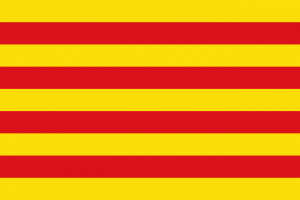Language/Catalan/Culture/Traditions-and-Celebrations
Catalonia is a rich and diverse region, with a distinctive language, culture, and history. One of the best ways to learn about the local culture is by studying its traditions and celebrations. In this lesson, you will explore some of the most important festivals, holidays, and customs in Catalonia, and gain a deeper appreciation for the people and the land.
Festivals and Holidays
Catalonia has a long tradition of public festivals, some of which date back to the Middle Ages. Many of these festivals are rooted in agrarian rituals or religious observances, and involve community participation, music, dancing, and feasting. Some of the most popular festivals in Catalonia are:
La Mercè
La Mercè is the official festival of Barcelona, celebrated each year on September 24th. The festival honors the city's patron saint, the Virgin Mary of Mercy, and features a diverse program of cultural events, including live music, firework displays, and parades. One of the highlights of the festival is the Correfoc, or "fire run," in which groups of people dressed as devils run through the streets, brandishing fireworks and torches.
Castells
Castells, or human towers, are a hallmark of Catalan culture, and are performed at festivals throughout the region. A castell is built by stacking people on top of each other, with the goal of reaching as high as possible without collapsing. The castells are typically accompanied by music and cheering, and are a testament to the strength, skill, and teamwork of the participants.
Festa Major de Gracia
The Festa Major de Gracia is an annual festival held in the Gracia neighborhood of Barcelona. The festival features elaborate decorations, concerts, and parades, as well as a competition for the best-decorated street. Each year, the residents of Gracia spend months preparing for the festival, transforming their streets into fantastical worlds of color and creativity.
Carnival
Carnival is a festive season celebrated in many parts of the world, but it has a special significance in Catalonia. During Carnival, people dress up in costumes, attend parades, and engage in raucous revelry before the beginning of Lent. Some of the most popular Carnival traditions in Catalonia include the Comparsa de Gegants i Capgrossos, or procession of giant puppets and heads, and the Rua de Carnestoltes, or Carnival parade.
Sant Jordi
Sant Jordi, or Saint George, is the patron saint of Catalonia, and is celebrated each year on April 23rd. The festival is marked by the exchange of gifts between loved ones, traditionally a book and a rose. The streets and squares of Catalonia are filled with bookstalls, as people search for the perfect gift for their friends and family.
Customs and Traditions
In addition to festivals and holidays, Catalonia has a rich heritage of customs and traditions that reflect the region's unique history and geography. Here are some of the most notable customs and traditions:
Castanyada
Castanyada is a traditional Catalan celebration held on All Saints' Day, November 1st. The celebration is centered on the chestnut, which is roasted and eaten with other seasonal foods, such as sweet potatoes and panellets, small almond cakes coated in pine nuts. Castanyada is also a time for families and friends to gather together and honor their loved ones who have passed away.
Caga Tió
Caga Tió, or "pooping log," is a quirky Catalan tradition that is still celebrated in some regions today. The tradition involves decorating a wooden log with a face and hat, and feeding it treats before beating it with sticks until it "defecates" small presents and sweets. The Caga Tió is typically accompanied by festive songs and cheers, and is a lighthearted way to celebrate the winter holidays.
Sardana
Sardana is a traditional Catalan folk dance, often performed in public squares or open spaces. The dance is characterized by its circular formation, with dancers joining hands and moving in unison to the rhythm of the music. The sardana is a powerful symbol of Catalan identity and unity, and is often performed at civic events and political rallies.
Correfoc
The Correfoc, or "fire run," is a spectacular Catalan tradition that involves groups of people dressed as devils, dragons, and other mythical creatures, running through the streets with fireworks and torches. Spectators are encouraged to participate by wearing protective clothing and joining in the dancing and cheering. The Correfoc is a uniquely Catalan celebration, and is both thrilling and awe-inspiring to witness.
Conclusion
In this lesson, you have learned about some of the most important festivals, holidays, and customs in Catalonia. By studying these traditions and celebrations, you have gained a deeper understanding of the local culture, and the values and beliefs that shape it. As you continue on your journey of learning Catalan, keep these traditions and customs in mind, and appreciate the richness and diversity of the Catalan people and the land they call home.

